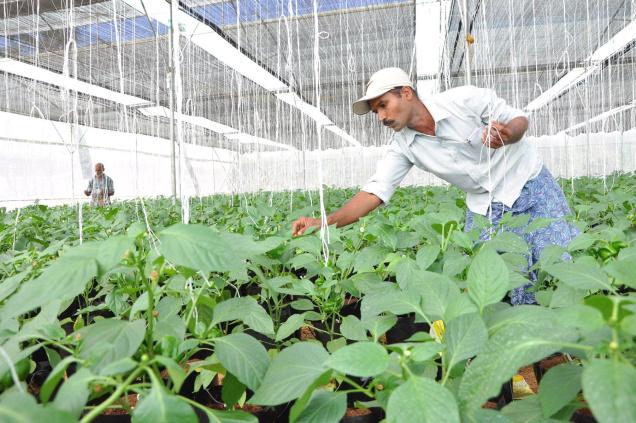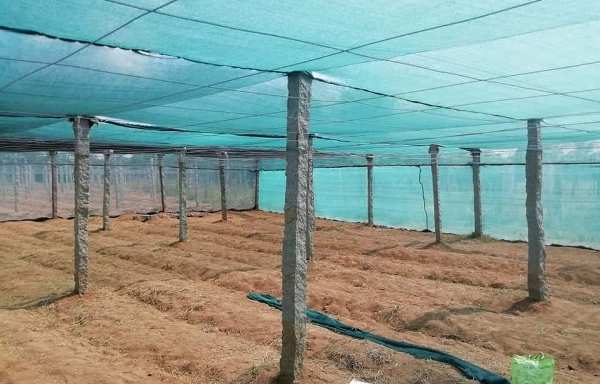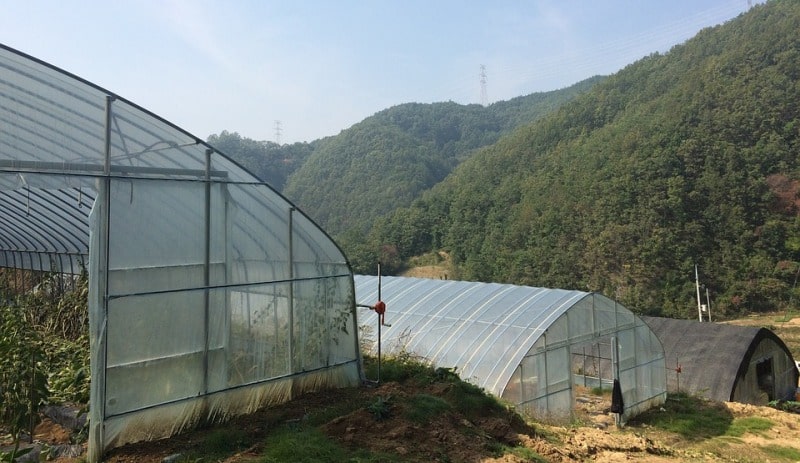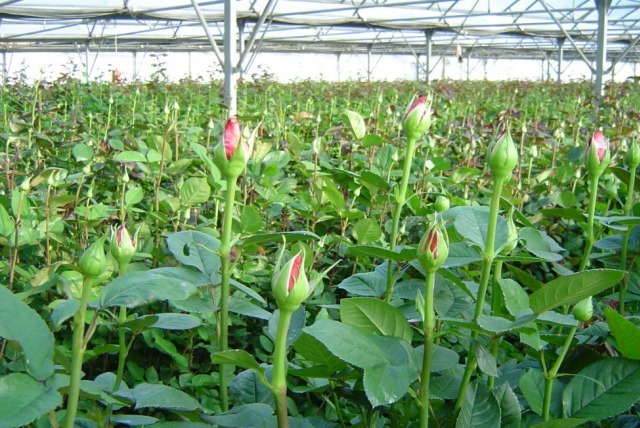A step by step guide for polyhouse farming profits and advantages:
Today, we discuss the polyhouse farming profits and its advantages. We also cover the polyhouse vegetable and flower cultivation for profits.
Why the cultivation in Greenhouse or Polyhouse beneficial as compared to open field crop?

The returns are good as poly house enables you to grow crops throughout the year irrespective of the season. Also, the quality of produce is better than the open field cultivation.
The yield under polyhouse or greenhouse cultivation can be achieved to the level of 4 to 8 times as compared to the open field crop cultivation. Various research trials conducted at agro-research centers in northern India that indicates that tomato (November planting) capsicum ( planted in mid-September) and cucumber (planting –mid-October) under poly house produced 1550 kg, 1500 kg and 1100 kg per 100 square meters. The duration of these vegetable crops was 4 to 10 months and more than 90% of total yield were obtained during the off-season (during winter before the start of summer) which fetches higher market price (2-4 times than normal season price).
You may also like Greenhouse Farming Guide in India.
Further, the crop duration can be extended up to the July or August with the application of micro irrigation and fertilizers and yield can be achieved to the level of 20-25 kg/square meter. Therefore, it is possible to harvest a single crop round year with minimum additional applications and inputs and higher returns can be generated. Further, Cut Flowers like Gerbera, Rose, Carnations, Lilly, Antherium, and Orchids can be grown under poly houses / Net houses giving high profits and top quality produce. This is the reason why the potential of floriculture under protected cultivation is huge for Indian and global markets.

How much does it cost for constructing a polyhouse?
The cost of construction of Polyhouse farming basically depends on the size and shape of polyhouse, poly house structure (GI/ Steel or Wooden) and types of Polyhouse (environmental controlled or naturally ventilated). The cost of the bigger naturally ventilated poly house (1000 m2) ranges from Rupees.900 to 1000 per square meter whereas the environmental controlled poly houses require 2 to 3 times investments compared to previous one depending on the automation gadgets installed. The per unit area cost of construction of smaller size poly houses are more as compared to the larger poly house. Similarly, the cultivation cost in larger Polyhouse is significantly lower than the smaller poly house.

In polyhouse farming, vegetables like colored capsicum are being grown on a large scale.
In India, flowers like carnation, roses, gerbera and some other flowers are being grown in poly houses. The crop selection depends on the poly house location, nearest market, and demand for produce.

Poly house farming requires skilled monitoring and precision. It is advisable to go for it only when the family member or promoter has close monitoring of daily activities in poly house cultivation.
You may also check the Vegetable Farming in India for Maximum Profits.
When can we get the Initial Investment in polyhouse cultivation back?
It is possible to get back the initial investment on polyhouse within a period of 4 to 5 years. If a cultivator/entrepreneurs go for polyhouse for nursery production of high yielding vegetable plants / Flower plants in an area where large scale vegetable/flower cultivation is done, in such situation he can get back his investment back within 2 to 3 years by providing quality planting materials to flower growers vegetable.
Minimum preferred or recommended project with the right economic viability and long-term sustainability is around 1 to 2 acres.
The success of the Nethouse/Polyhouse Project depends on the scale extent of the project.
Bottom Line: Polyhouse cultivation is 100 times better than open field farming. you can expect excellent returns in polyhouse farming.
You may also like Growing Vegetables in Hydroponics.
how can i start it and apply for subsidies in polyhouse farming ?
Contact NABARD OR local horticulture department for Polyhouse subsidy information.
Sir, I want to do poly house forming. I have no idea about the poly house.
so please give the details of poly house forming.
Thanks
sateyndra Katiyar
It is nothing but growing crops under controlled environment rather growing in outside fields. You can get subsidies for polyhouse from horticulture department. Read this: Polyhouse Subsidy, Cost, profit, Project Report.
I want to start poly house farming can u please provide the detail of poly house farming
I want to start polyhouse farming in Akola (Maharashtra). Please help me in selecting commercialy viable cultivation and cost of polyhoes construction for 100000Sqm area. Soil is deep black and have saline track. Please suggest. Thanks
Looking for people interested in polyhouse farming. Even better if you already have a polyhouse but don’t know how to keep it profitable/sustainable. Thank you.